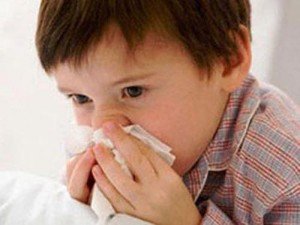Nosebleeds occur frequently in adults and children and can be quite menacing, but they are usually not a health hazard. However, severe problems may also cause nose bleeding; therefore, the condition should not be taken lightly if it is recurrent and prolonged.
Children tend to experience more nosebleeds than adults as they irritate the nasal membrane by either picking their noses or going through physical assaults of trauma. If an adult experiences a nosebleed, the problem should be significantly considered if not caused by physical trauma. A sudden nosebleed also called spontaneous epistaxis, may be caused due to a serious medical issue. In such situations, it is advisable that you visit a doctor immediately.

Nosebleeds are common in adults and children living in areas prone to cold weather and people who stay indoors often. The dry air indoors and in cold weathers often causes the mucous membrane of the nose to get dry, brittle and crack, eventually, resulting in a nosebleed.
Causes
- Blowing the nose with extreme force
- Picking the nose
- Dryness due to cold weather or staying indoors too often
- Physical trauma or allergies
- Damaging the nasal membrane with foreign objects (common in children)
- Infections
- High blood pressure
- Atherosclerosis
- Impaired blood clotting mechanism
- Frequent use of over-the-counter blood thinning medications such as aspirin
- Cocaine
Symptoms
- Bloody nose
- Bleeding from the ears or mouth (rare)
Treatment
- Sit straight and bend forward
When you sit upright, you prevent further bleeding by lessening the blood pressure of the veins in your nose. Leaning forward prevents choking and swallowing of the blood that can irritate the stomach.
- Shut your nostrils
You can do this by pinching your nose using your thumb and index finger. Make sure you breathe through your mouth while closing your nose, for about 5-10 minutes. This will apply pressure on the nasal septum which is the bleeding point, to discourage excessive bleeding.
- Prevention
In order to prevent nose bleeding again, do not pick your nose with your finger or a foreign object for a few hours. During this period make sure you keep your head elevated from your heart level.
- In case of another nose-bleeding episode
Blow your nose forcefully to remove the blood clots in your nose. Use a decongestant nasal spray to spray both nostrils. Close your nostrils by pinching your nose again and call a doctor immediately.
When to seek medical help
- If nose bleed is recurrent and takes more than 20 minutes to recover.
- If you have injured your nose after the nosebleed by physical trauma, accident or assault-you may have broken your nose in the process of injury.
Learn More
To learn more about treating nosebleeds and other head and neck injuries enrol into workplace approved training programs. Courses such as standard and childcare first aid teach candidates to recognize and treat a variety of minor and major bleeding emergencies. Providers can be found on our locations page. We have training partners located throughout Canada in Ottawa, Toronto, Calgary, Edmonton, Winnipeg and Vancouver.
Related Video on Nosebleeds
http://www.youtube.com/watch?v=cakw-IVVyhE

I learned this trick from a very ctmapssionaoe nurse at Swedish when I was 10 I was being admitted to the hospital for a staph infection in my bone marrow nasty. It turned out some variant bug was in my system and caused a massive nose bleed that no one could get to stop. This nurse stepped in with a small wad of tissue and placed it under my upper lip, up against my nose. It stopped the bleeding. I’ve used this trick with every nose bleed I’ve encountered with my self and my loved ones ever since, and it’s worked every time. Usually it stops the bleed within 10-30 seconds. I usually keep the wad in for several minutes after the bleeding has stopped. I don’t know why it works, but it has never failed me, it’s only downfall is that it looks like you have a fat upper lip while that wad is stuck under it.VA:F [1.9.13_1145]please wait…